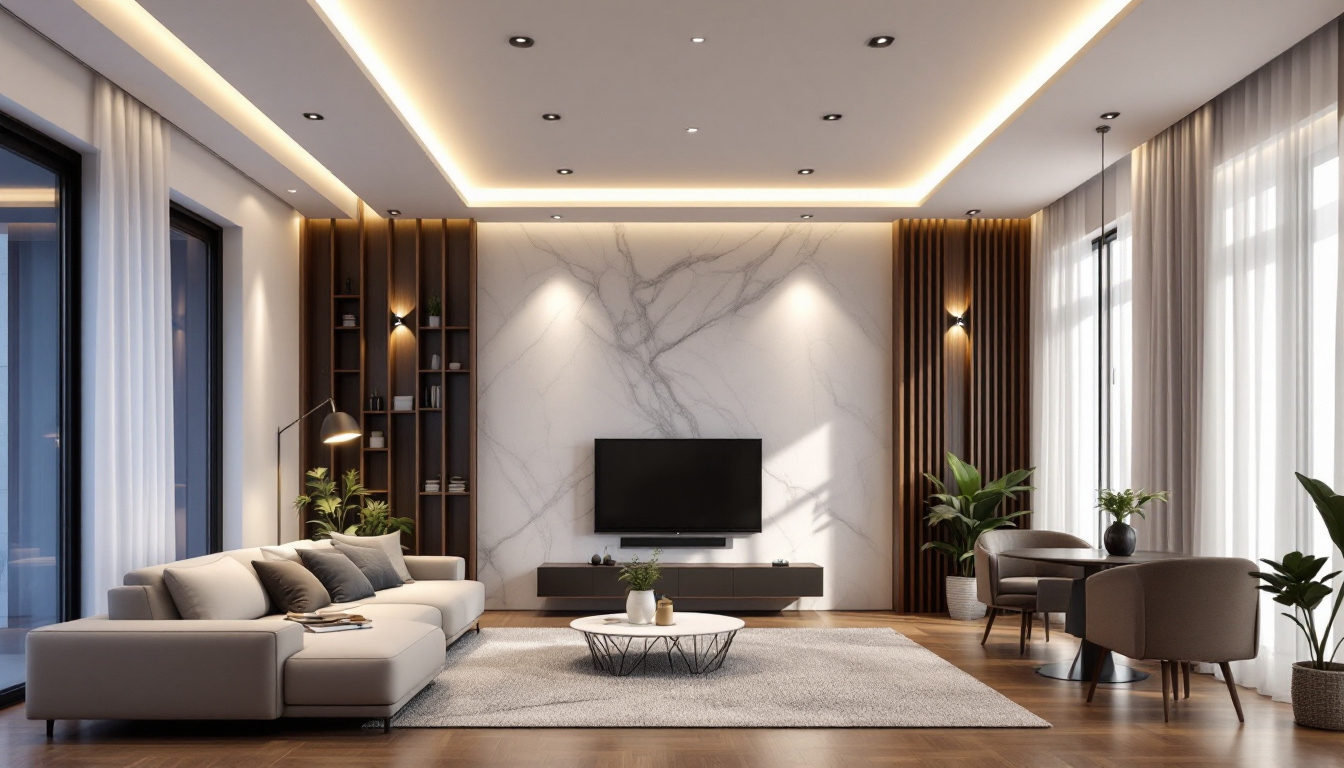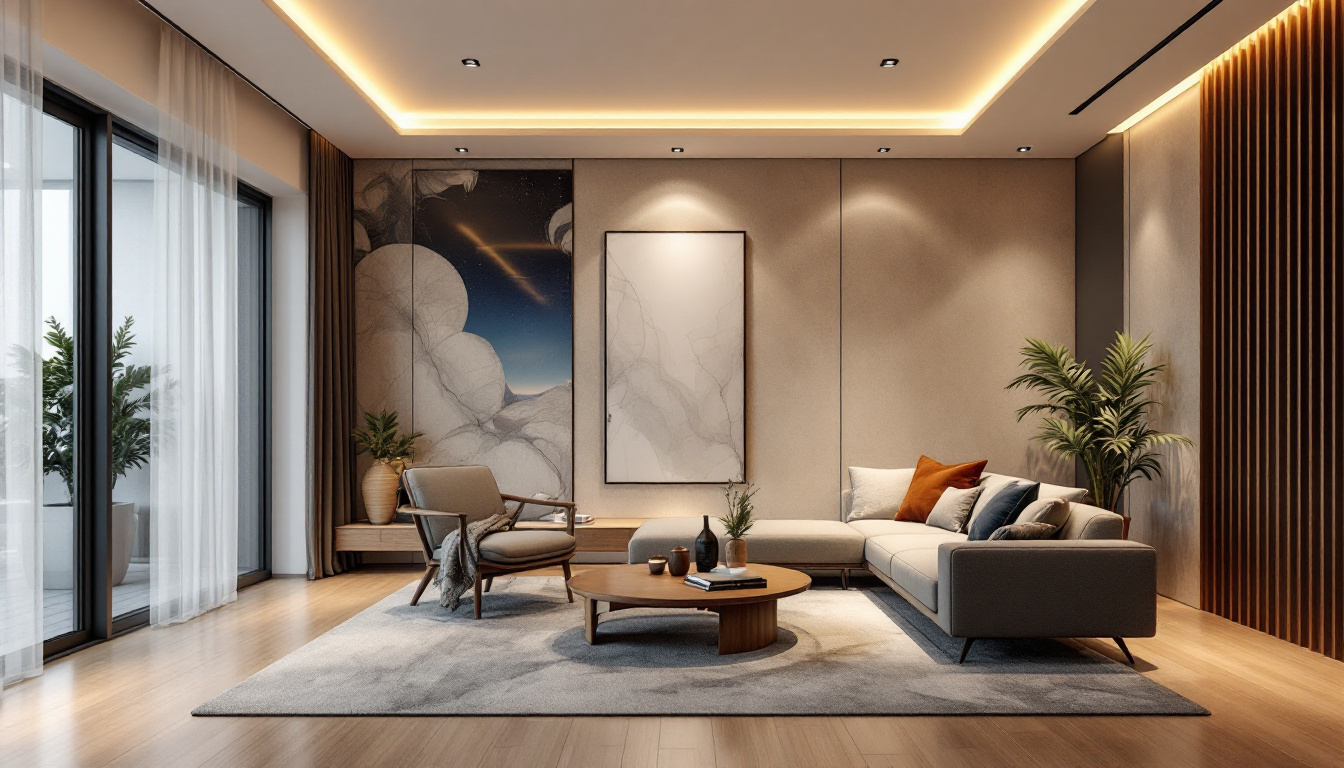
In the ever-evolving world of lighting design, LED recessed ceiling lights have emerged as a staple for both residential and commercial spaces. As lighting contractors, mastering the intricacies of these fixtures is essential for delivering superior results to clients. This article delves into the top resources available to lighting contractors, providing insights into installation techniques, design considerations, and the latest technological advancements in LED recessed lighting.
Before diving into the resources available, it is crucial to understand what LED recessed ceiling lights are and why they have become so popular. These fixtures are designed to be installed flush with the ceiling, providing a clean, unobtrusive look while delivering powerful illumination. Their sleek design not only enhances the aesthetic appeal of a space but also maximizes the use of available light, making them a preferred choice in modern interior design.
LED technology offers numerous advantages over traditional incandescent or fluorescent lighting, including energy efficiency, longevity, and lower heat output. This makes them an ideal choice for a variety of applications, from homes to offices and retail spaces. Additionally, the ability to dim LED lights allows for customizable ambiance, making them suitable for both vibrant social gatherings and quiet, intimate settings.
There are several types of LED recessed ceiling lights available on the market, each catering to different needs and preferences. Understanding these variations can help contractors recommend the best options to their clients. Each type serves a unique purpose, ensuring that every space can benefit from optimal lighting solutions.
Lighting contractors should be well-versed in the benefits of LED recessed lights to effectively communicate their value to clients. Some of the key advantages include:
Moreover, LED recessed ceiling lights are often compatible with smart home technology, allowing users to control lighting through mobile apps or voice commands. This integration not only enhances convenience but also offers the ability to set schedules and adjust brightness levels remotely, further improving energy savings. As technology continues to evolve, the potential applications for LED recessed lighting will only expand, making them an enduring choice for both residential and commercial spaces.
Equipping oneself with the right tools is crucial for successful installation of LED recessed ceiling lights. Here are some essential tools that every lighting contractor should have in their arsenal.
Every contractor should have a set of basic hand tools, including screwdrivers, pliers, and wire strippers. These tools are necessary for securing fixtures and making electrical connections. A quality set of screwdrivers, both flathead and Phillips, ensures that you can tackle any type of screw you encounter. Pliers, particularly needle-nose varieties, are excellent for reaching into tight spaces and bending wires as needed. Additionally, having a reliable wire stripper allows for precise stripping of insulation without damaging the wire itself, which is crucial for maintaining a safe and effective electrical connection.
Power tools can significantly speed up the installation process. A cordless drill is invaluable for making holes in the ceiling and securing fixtures. Additionally, a saw can be useful for cutting drywall or ceiling materials to create a clean opening for the lights. When selecting a saw, consider a reciprocating saw or a jigsaw, as they provide versatility for various cutting tasks. Furthermore, having a laser level can ensure that your fixtures are installed perfectly straight, enhancing the overall aesthetic of the lighting setup and preventing any future adjustments.
After installation, ensuring that the lights function correctly is essential. A multimeter can help contractors check voltage and continuity, while a light meter can measure the brightness of the installed fixtures to ensure they meet the desired specifications. Additionally, having a circuit tester can help verify that the circuit is live and functioning before beginning any installation work, which is a critical safety measure. Moreover, a clamp meter can be beneficial for measuring current without needing to disconnect any wires, allowing for a quick assessment of the electrical load and ensuring that the system operates within safe parameters.
In addition to tools, safety gear should never be overlooked. Wearing safety glasses protects your eyes from debris while drilling or cutting, and gloves can prevent cuts and abrasions when handling sharp materials. A hard hat is advisable when working in areas where there may be overhead hazards. Furthermore, using a respirator mask while cutting drywall or other materials can help protect against inhaling harmful dust particles, ensuring a safer working environment. Prioritizing safety not only protects the contractor but also contributes to a more efficient installation process, as it minimizes the risk of accidents and delays.
Proper installation techniques are vital for achieving optimal performance and aesthetics. Here are some best practices that lighting contractors should follow.
Before installation begins, planning the layout of the recessed lights is crucial. This involves determining the spacing between fixtures to achieve even illumination. A common guideline is to place lights approximately 4 to 6 feet apart, depending on the height of the ceiling and the desired brightness.
Understanding electrical requirements is essential for safe installation. Contractors must ensure that the circuit can handle the load of the new fixtures. Additionally, using the appropriate gauge wire is critical for maintaining safety and performance.
When mounting the fixtures, it is important to follow the manufacturer’s instructions carefully. This often involves securing the fixture to the ceiling joists and ensuring that any insulation is kept away from the heat sink of the LED to prevent overheating.
Lighting contractors must also consider the design aspects of LED recessed ceiling lights. The right design can enhance the overall aesthetic of a space while providing functional lighting.
LED recessed lights come in various color temperatures, typically measured in Kelvin (K). Warmer tones (2700K-3000K) create a cozy atmosphere, while cooler tones (4000K-5000K) are ideal for task-oriented spaces. Understanding the desired ambiance can help contractors make informed recommendations to clients.
Many clients prefer the ability to control the brightness of their lighting. Contractors should ensure that the selected LED recessed lights are compatible with dimmer switches. Not all LED lights work with standard dimmers, so using compatible dimmers can prevent flickering and other issues.
Strategic placement of recessed lights can enhance functionality. For example, in kitchens, placing lights above work areas can improve visibility, while in living rooms, lights can be positioned to create a warm and inviting atmosphere. Understanding the purpose of each room can guide effective placement.
The lighting industry is continuously evolving, with new technologies enhancing the capabilities of LED recessed ceiling lights. Staying informed about these advancements can provide contractors with a competitive edge.
Smart LED recessed lights offer advanced features such as remote control, scheduling, and integration with home automation systems. Contractors should familiarize themselves with these products, as clients increasingly seek smart lighting solutions for convenience and energy management.
Color-changing LED recessed lights allow users to adjust the hue and intensity of the light, providing flexibility for different moods and occasions. Understanding how to install and program these fixtures can enhance a contractor’s service offerings.
Some modern LED lights come equipped with energy monitoring features that allow users to track their energy consumption. This technology can be a selling point for environmentally conscious clients looking to reduce their carbon footprint.
Continuous learning is vital for lighting contractors to stay ahead in the industry. Numerous resources are available for contractors to enhance their knowledge and skills.
Joining industry associations such as the Illuminating Engineering Society (IES) or the National Electrical Contractors Association (NECA) can provide valuable networking opportunities, access to training programs, and the latest industry news.
Many platforms offer online courses and webinars focused on LED lighting technology, installation techniques, and design principles. These resources can be a convenient way for contractors to expand their knowledge base at their own pace.
Attending trade shows and expos allows contractors to see the latest products and technologies firsthand. These events often feature workshops and seminars led by industry experts, providing invaluable insights into best practices and emerging trends.
Mastering LED recessed ceiling lights is essential for lighting contractors aiming to provide exceptional service and meet the evolving needs of clients. By understanding the types of fixtures available, utilizing the right tools and techniques, and staying informed about technological advancements, contractors can enhance their expertise and deliver high-quality installations.
Furthermore, leveraging educational resources and networking opportunities can foster professional growth and ensure that contractors remain competitive in a dynamic market. Embracing these strategies will not only elevate the quality of work but also build lasting relationships with clients, ultimately leading to a successful career in the lighting industry.
Ready to take your lighting installations to the next level? At LumenWholesale, we provide lighting contractors like you with the highest quality LED recessed ceiling lights and more. Our spec-grade products come at unbeatable wholesale prices, ensuring you get the best value for your projects. Say goodbye to local distributor markups and hello to a vast selection of reliable lighting options that meet rigorous industry standards. Plus, with free shipping on bulk orders, you can stock up on premium lighting without worrying about hidden fees. Elevate your service offerings and delight your clients with the perfect blend of quality, affordability, and convenience. Discover the LumenWholesale difference today by visiting our extensive collection at Wholesale Lighting at the Best Value.

Discover expert insights on 6-inch recessed lighting from top lighting contractors.

Discover how exterior hanging lights are revolutionizing the work of lighting contractors by enhancing efficiency and aesthetics.

Discover the common pitfalls lighting contractors face with decorative LED light bulbs and learn how to avoid them.

Discover the crucial role outside flood lights play for lighting contractors in enhancing safety, security, and aesthetics.